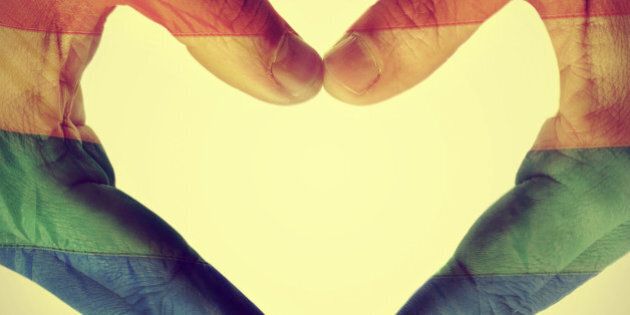
"I can't say who I am unless you agree I'm real." - Amiri Baraka
Is there some part of you that has been denied or ignored? A fundamental part of you that you've been asked or forced to hide, or that someone has refused to see? Have you ever tried to access health care or housing services only to be told that your needs cannot be accommodated and that you in fact do not exist? If you are lesbian, gay, bisexual, transgender, queer, or two-spirit (LGBTQ2S), the answer to at least one of these questions is likely YES.
The month of Pride is a time for LGBTQ2S individuals to not only say who we are; but to also celebrate and be proud of who we are. Pride month is meant to remind us that we are real and that we matter, however, not all members of our community are seen; not all are celebrated; many are silenced and marginalized, made to feel that they are not real and that they do not belong.
It is our obligation and should be our privilege to work alongside our LGBTQ2S youth community members experiencing homelessness.
LGBTQ2S youth homelessness has been acknowledged as an emergent crisis for over a decade. While there have recently been increased efforts to support LGBTQ2S youth experiencing homelessness and to learn more about the barriers and challenges experienced by this population of young people; still there is minimal investigation into these issues and large-scale data collection remains limited. For example, national measurements on LGBTQ2S youth homelessness in Canada and the United States are often based on older data. The hazards of relying on this old data is that there is an under-estimate of the real prevalence, and that without an accurate count it is difficult to confirm crucial characteristics of the population or to secure necessary increases in funding, or to build a policy case for the delivery of more targeted services. This gap in data inevitably impairs service delivery.
A high proportion of LGBTQ2S youth report feeling safer on the streets than in shelters, due to homophobic and transphobic violence that occurs in shelters and youth serving organizations. Although LGBTQ2S youth often avoid shelters and may describe the streets as safer in certain circumstances, it is important to note that the streets are not safe and sleeping outside is not safe. LGBTQ2S youth in particular are at high risk of violence and discrimination.
We have heard numerous young people talk about homophobic and transphobic violence on the streets and how for LGBTQ2S youth, staying awake all night is sometimes the only strategy to increase safety. Here is how one young trans man interviewed by Abramovich (2014) described sleeping rough in Toronto:
"Nothing's really safe. That's the biggest issue. There's no such thing as safe. You just got to have your wits about you, you sleep during the day and you're up walking around all night. Daytime is your safe time because there are more people around."
(M, 28 years old)
LGBTQ2S youth are especially vulnerable to mental health concerns, and face increased risk of physical and sexual exploitation, substance use, suicide, and family rejection. In a recent report issued by the True Colors Fund and the Williams Institute, U.S. based homeless youth service providers report that LGBTQ2S youth experience homelessness for longer periods than non-LGBTQ2S youth, and that identity based family rejection is one of the most frequently cited precipitators of their homelessness. For these reasons, focused responses are needed if we are to meet the needs of queer and trans youth experiencing homelessness. Focused responses include targeted prevention tactics, specialized housing programs, as well as building the capacity of existing housing programs to serve LGBTQ2S youth in a safe and affirming manner. Everyone deserves a safe place to sleep at night.
Over the past year we have seen lots of positive changes in Canada and the U.S. For example, Toronto will open its first transitional housing program for LGBTQ2S youth this summer and Canada's first LGBTQ2S host homes program was recently announced in Alberta. Additionally, Eva's National Learning Community developed a National LGBTQ2S Toolkit to provide services with the resources they need to better support LGBTQ2S youth, and the Government of Alberta has recognized that ending youth homelessness will require prioritizing specific subpopulations of young people, including LGBTQ2S youth. This involves the development of a strategy to meet the unique needs of this population, which will be implemented by youth serving organizations across the province of Alberta.
In the U.S., efforts to identify strategies to prevent LGBTQ2S youth homelessness are underway through the LGBTQ Youth Homelessness Prevention Initiative. This initiative, taking place in Cincinnati, OH and Houston, TX, was developed by and is supported by five federal partners - the U.S. departments of Housing and Urban Development, Education, Health and Human Services, and Justice, and USICH - in partnership with the True Colors Fund, a nonprofit organization dedicated to ending LGBTQ2S youth homelessness.
We certainly have a lot to celebrate this Pride, but the fight is far from over.
As we celebrate all of the progress that we have made this past year, and as we give thanks to our queer and trans elders who paved the way for our coming out and acceptance, let us remember that the work is not done.
As we march the streets and celebrate who we are, let us remember all of the young people who will still be without a home and who are still pushed to margins on a daily basis. May we continue the fight for equal rights, and may we do whatever it takes to ensure that all of our youth can be their full authentic selves and still have a place to call home, because: "I can't say who I am unless you agree I'm real."
ALSO ON HUFFPOST:
